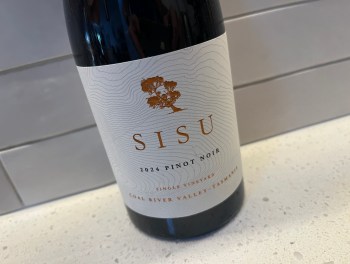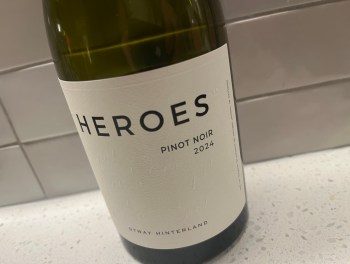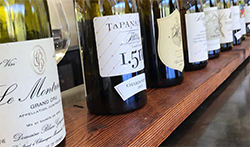The Marlborough Diaries: Day 3.5555
 |
| The draft Marlborough sub-regions Click on the image to enlarge |
Back in November I was lucky enough to attend the Marlborough Wine Weekend, essentially a several day long celebration of all things Marlborough wine (and food) targeted mainly towards trade, interested wine enthusiasts and other assorted wine enthusiasts.
Over the course of said weekend I managed to pen the first few parts of a Marlborough diary (you can read them here and here) with the intention of then wrapping it all up in one summary post.
Sadly, life got in the way of me actually writing the super concluding post during the weekend, but I still really want to talk in this post about one key learning that came out of the weekend that I think is really important. A single focal point that I found cam up most often when to talking to producers and trade over the course of the weekend: The Marlborough sub-regions.
Now brand Marlborough is strong. Very strong. Pushed along by clever marketing and the all conquering power of it’s Sauvignon Blanc (and growing Pinot reputation), the region continues to kick goals internationally. But that’s not enough. No. Nor should it be for that matter, as I think that all passionate vignerons want their wines, their brands, their region etc to evolve.
The good news then is that this evolution is happening. That said vignerons are acknowledging (and attempting to address) a perceived weakness of the region (to my mind at least).
Homogeneity.
It’s not hard to see this homogeneity in action. Look at a bracket of under $20 Sauvignon Blancs for a perfect example, with formulaic wine after formulaic wine stacking up to remove any idea that there might be more to Marlborough than simple grassy Sauvs.
So how do the Marlborough producers address this homogeneity? Acknowledging terroir – and all it’s variability and individuality. Structurally, critically, it means moving away from the heavy yielding ‘potato country’ areas on the flat alluvial plains – or at the very least controlling the vigour on these sites – and planting vines in more marginal country on the ridges and fringes. It means exploring clones, tinkering with barrel ferments and wild yeast and whole bunches. It’s about pushing the boundaries beyond the – often quite ‘safe’ – Marlborough style boundaries in a bid to find more vivid expressions of terroir. It means generally experimenting, refining, redefining and evolving.
In case you haven’t guessed it by now, all of this activity points to a focus on sub-regionality, a focus on the similarities – and differences – found within the greater Marlborough region.
Now before I go any further I want to show this little table, brought to you by the (very capable. And I’m not just saying that because they invited me over to NZ) Wine Marlborough organisation.
As you can see what this table identifies is some of the (proposed. They’ve not been fully defined as yet) Marlborough sub-regions. What’s interesting about these sub-regional designations though is the differences. Subtle differences that make for subtly different wines. Subtle differences in soil type, moisture, heat the lot. Subtle differences that, when identified and worked with and adapted to, ultimately make for more interesting wines (or at least I think so).
Wine Marlborough realise this too so during the course of the Marlborough Wine Weekend the wines were often bracketed with their relative sub-region relatives, allowing for some very handy comparisons across varieties. In this fashion it was fascinating to compare the slightly more herbaceous and flinty Awatere Valley Sauvignon Blancs with the much richer and more tropical Wairau examples, or to see a certain dark fruit richness exhibited across the Southern Valley Pinot Noirs that wasn’t as evident in the Awatere wines. Again they were subtle differences but distinctive enough to be noticeable (and enjoyably so).
Of course I think everyone is aware that this push towards sub-regionality is not without its pitfalls…
The fact that the the sub-regions aren’t technically mapped out yet is one of such pitfalls (and a contentious one), a pitfall that also fails to acknowledged just how variable this landscape can be (particularly in the Awatere) containing a whole melange of different soil types, aspects, slopes, altitudes and more.
These sub-regional plans also ignore just how young Marlborough is as a wine region, with a history that only dates back to 1973 (for modern commercial plantings that is) and with whole tracts of very recent plantings within it’s boundaries. New plantings that aren’t exactly accurately reflecting their terroir just yet.
 |
| Marlborough looking green and varied. |
Regardless of the fledgling nature of these proposed sub-regions though it was hard not to be moved (or at least interested) by this evolution. It’s an evolution that I think is rather natural (and enjoyable for all). It’s that push to identity what is that makes wines tick, that quest to improve the quality of finished wines by concentrating on the most important part – the grapes.
Better than just talking about it though I was impressed to see this evolution in action, to hear from the makers whom were searching for new places to plant Pinot in the heavier clay soils of the Southern Valleys. Who were grafting Chardonnay across to Syrah in the Wairau and celebrating off dry Riesling from the Awatere.
Ultimately it was plain motivating stuff and enough to convince me that despite the homogenous reputation of this powerhouse wine region, there is much more to Marlborough (and even more to come)…
(I’ve quite a backlog of tasting notes to publish from this trip too. That’s next on the list…)
Help keep this site paywall free – donate here






Comment
I think you posted this on your blog instead of sending it to your course tutor, by mistake 😉